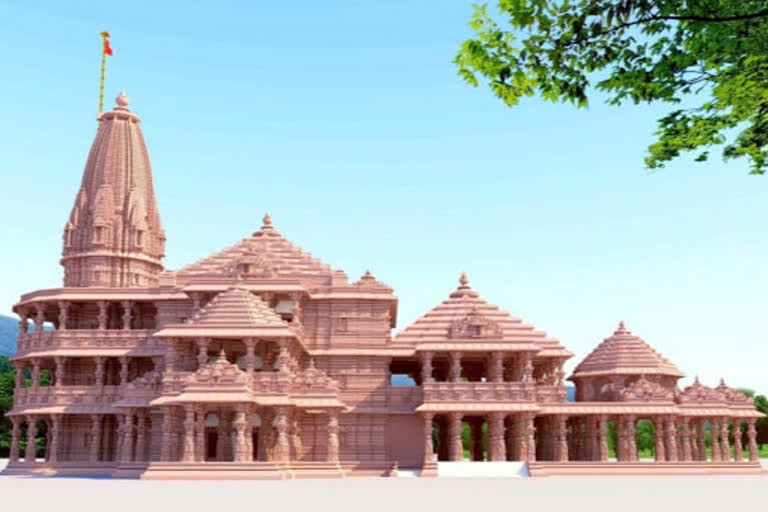Ayodhya (Uttar Pradesh):All arrangements at the Ram Temple site in Ayodhya for the bhoomi pujan ceremony, which is slated to be held on August 5 have been completed.
The ground-breaking ceremony of the temple is scheduled to begin from 11 am and is likely to be attended by over 200 high-profile guests.
On this occasion, Prime Minister Narendra Modi is set to create history by laying the foundation stone of Ram Temple in a time frame of '32 seconds'.
Senior BJP and RSS leaders, who were associated with the Ram Janmabhoomi movement, are expected to witness the grand ceremony.
On November 9, 2019, the Supreme Court paved the way for the construction of a Ram temple on 2.77 acres of land in Ayodhya where the Babri mosque stood until 6 December 1992.
The judgment marks the closure of an inter-religious, legal and political dispute which has lasted for well over a century.
The political dispute on the issue was magnified manifold when the Bharatiya Janata Party (BJP) actively decided to make the construction of the Ram temple a political plank in the 1991 elections.
Party leader Lal Krishna Advani took out a Rath Yatra demanding construction of a Ram Temple in Ayodhya in 1990. To be sure, the BJP has had varying articulations on the issue. Its election manifestos are the biggest proof.
Ram Janmabhoomi (even Ayodhya) did not feature in the BJP’s 1984 manifesto, its first as a political party. In 1989, the BJP manifesto says the following on the issue: “By not allowing the rebuilding of the Ram Janma Mandir in Ayodhya, on the lines of Somnath Mandir built by the Government of India in 1948, it (the government) has allowed tensions to rise, and gravely strained social harmony”.
The context for this posturing was the Rajiv Gandhi government’s decision to open the locks of the Babri Mosque in 1985, which was seen by many as an attempt to balance communal equations after his government overruled the Shahbano verdict of the Supreme Court.
In the 1991 manifesto, the BJP’s tone becomes stronger on the Ayodhya issue. The manifesto says, “It seeks the restoration of Ram Janmabhoomi in Ayodhya only by way of a symbolic righting of historic wrongs so that the old unhappy chapter of acrimony could be ended, and a Grand National Reconciliation affected”.
The BJP was fighting the 1991 elections in the backdrop of Lal Krishna Advani taking a Rath Yatra from Somnath to Ayodhya in 1990, which was interrupted by his arrest in Bihar.
It needs to be kept in mind that the BJP’s temple push also came after the announcement of 27% Other Backward Class (OBC) reservations, as recommended by the Mandal Commission report, by the VP Singh government.
The 2004 manifesto of the party adopts a completely different tone on the issue.
t says: “The BJP remains committed to its stand that the judiciary’s verdict in this matter should be accepted by all. However, we believe that dialogue, and a negotiated settlement in an atmosphere of mutual trust and goodwill, are the best way of achieving this goal. The BJP appeals to the religious and social leaders of the Hindu and Muslim communities to speed up the process of dialogue and bring it to amicable and early fruition”.
The demolition of the Babri mosque was a game-changer in India’s politics. How did it help the BJP, though?
It is instructive to look at the BJP’s electoral performance, especially vis-à-vis the Congress, which it has now replaced as the national political hegemon.
